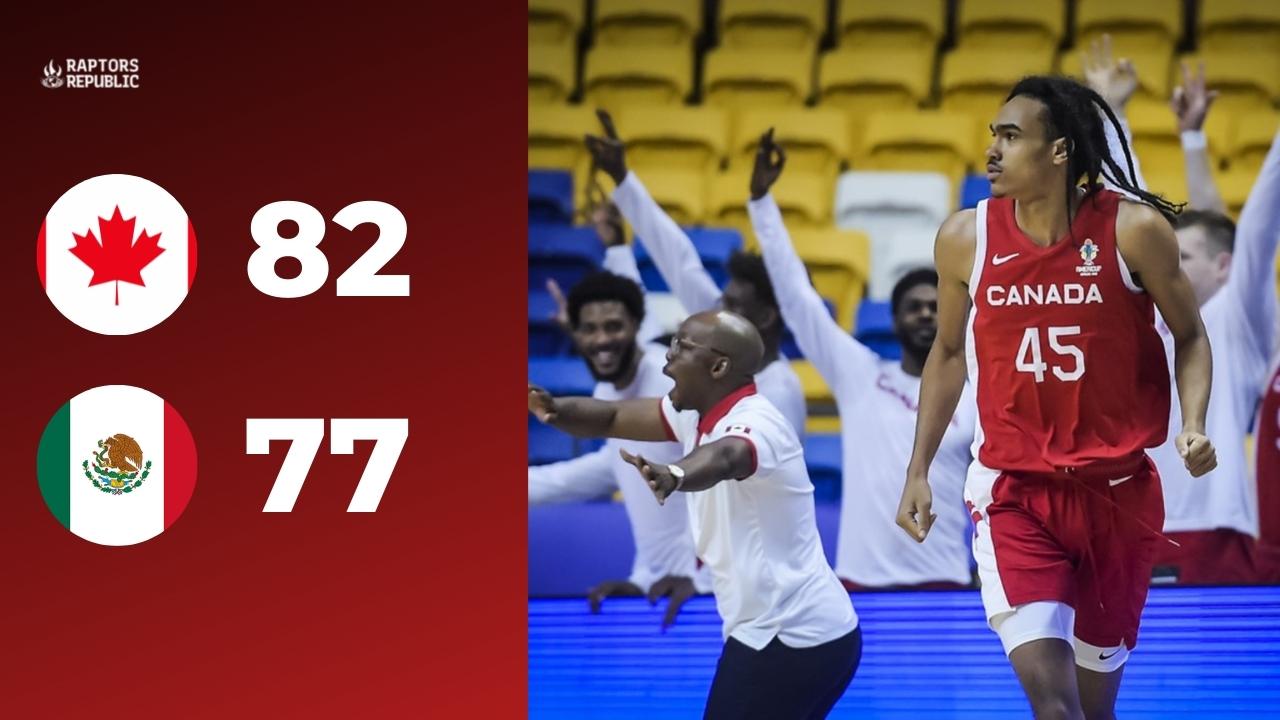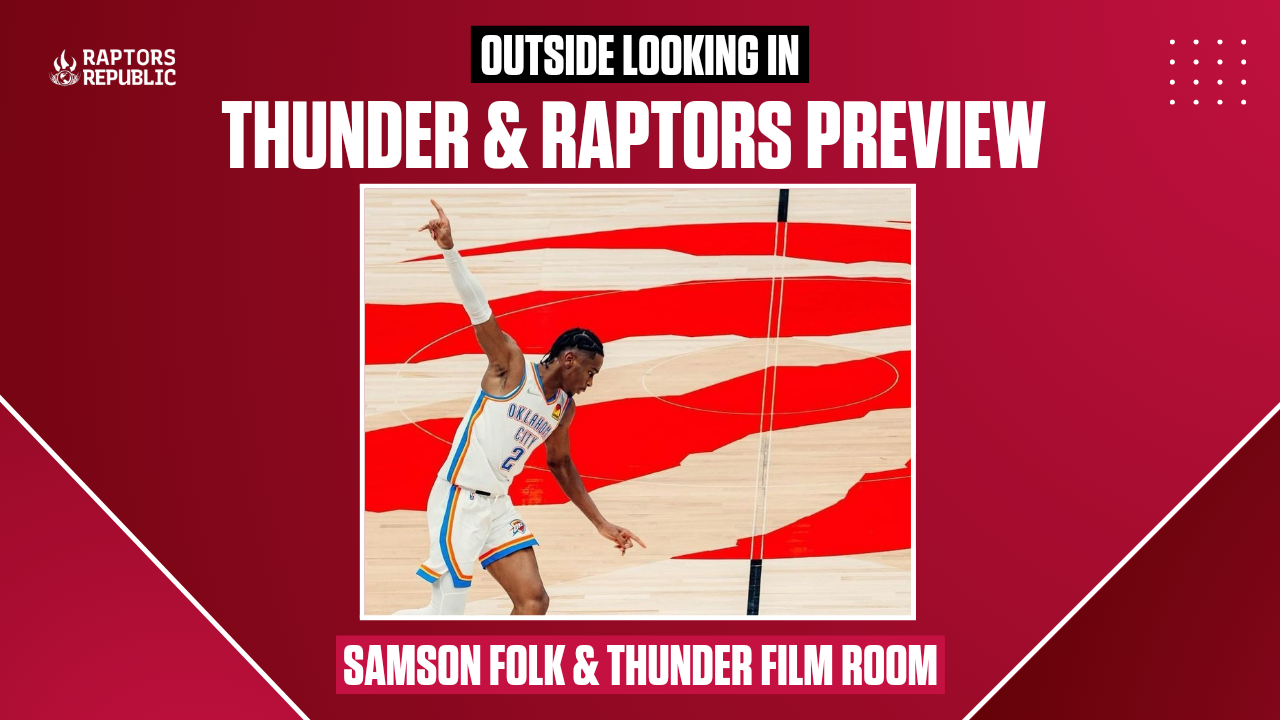Canada will be advancing to the Americup 2022 semi-finals to face Brazil, but a day of rest creates some room for reflection.
Canada finished the round robin 2-1 with a roster that’s not even its A team; however, Canada is currently ranked 18th in the world. Not only did we lose to 14th-seeded Brazil, we trailed by 10 points with only 8:33 left against 40th-ranked Uruguay and barely escaped with a win over 66th-ranked Colombia after an accidental foul in the dying seconds put Trae Bell-Haynes at the charity stripe, who hit his first free throw to give Canada the lead and then deliberately missed his second. Yesterday, it was Bell-Haynes’ heroics, once again, that saved us against 24th-ranked Mexico – his layups built a five and eight-point lead late in the final stretch.
Canada is known internationally for its humility, but even with an undermanned roster, it cannot lose its prove-to-the-world-we-can-compete chip on its shoulder, the same chip that catapulted Canada into its current golden age.
In the same way the Olympic Qualifying Tournament loss against Czech Republic humbled Canadian basketball, now is a great opportunity to evaluate what Canadian basketball needs to do better.
1. Continue to strengthen our player development programs
The USPORTS-CEBL partnership to develop the best USPORTS players has helped Thomas Kennedy, Kadre Gray and Lloyd Pandi. Gray played an instrumental role in Canada’s comeback against Uruguay, hitting back-to-back mid-range pull ups in the fourth quarter, followed by a triple to give his team a three-point lead. Pandi’s floater and triple cemented a seven and nine-point lead late in the quarter-finals game. Kennedy, Gray and Pandi combined for 27 points (33% of Canada’s 82 points).
🇨🇦 💣 @lloydpandi 🔥
Watch live on Courtside 1891 📺: https://t.co/1ZRJDuMHCl#AmeriCup | @CanBball pic.twitter.com/LWNbAcfzlA
— FIBA AmeriCup (@AmeriCup) September 8, 2022
CEBL’s developmental model is only in its fourth season, however, and as the rest of the world has been developing its players for a longer period, it’s been a wake-up call that we are only catching up with everyone else.
Brazil’s top league, Nova Basquete Brasil (NBB), has had a feeder league, Liga de Desenvolvimento de Basquete (LDB), since 2011. The LDB identifies and develops talent for the NBB and Brazil’s national teams – in past seasons, the age limit was higher, but they lowered it to U-20 in 2017-18. The best LDB players play for their parent club while the LDB season runs throughout the summer months.
Brazil’s Yago Mateus dos Santos, who was the MVP of Globl Jam, scored 13 points against Canada, and has never left Brazil to pursue professional opportunities. He is currently the leading scorer on Brazil (13 points) and has been an elite talent despite staying away from the North American limelight (notwithstanding his Adidas Nations tournament performance).
🇧🇷 Yago dos Santos está oficialmente ENCENDIDO 🔥💣
📺https://t.co/8Cgvk83C3B#AmeriCup | @basquetebrasil pic.twitter.com/k9EgkIiM9u
— FIBA AmeriCup (@AmeriCup) September 3, 2022
Two other Uruguayans also showed their elite development, having played in Argentina and Spain, respectively. Joaquin Rodriguez, a 6’6’’, 23 years old wing who honed his skills across the border in Argentina’s Liga A, displayed tremendous poise handling the ball against Canada. He scored a team-high 21 points, helped Uruguay build up a 10-point lead, and made 4 threes in the second half. 19-year-old Agustin Ubal, who has played in Spain since 16 and recently earned some limited minutes in Spain’s ACB, felt comfortable handling the ball with 31 seconds left, being guarded by Dalano Banton.
Mexico’s 19-year-old Gael Bonilla had 13 points in the quarter-finals, shooting 3-for-7 behind the arc. He’s been developing in Spain since he was 15 and has a bright future ahead.
The point here isn’t about what developmental systems are better – it’s about not patting Canada’s back for its talent development. It’s about recognizing that our nation still has a long way to go.
2. Focusing more attention on regional competitions outside of Canada and America
It’s part of Canadian identity to obsessively compare ourselves to our neighbours down south – and seek their validation. The inaugural Globl Jam was the right step in getting other countries to come here to help Canada become a basketball destination. Canada, however, has to also focus on putting its stamp when we are guests in other host nations.
Paying more attention to how Canadian pro clubs do in regional tournaments like the Basketball Champions League Americas (BCLA) would indicate our compete level. The 2021 CEBL champions Edmonton Stingers, who were without three-time MVP Xavier Moon (who is not Canadian), struggled to make it out of the round robin. São Paulo, the team who fielded two former Raptors – Bruno Caboclo, who was named tournament MVP, and Lucas Nogueira – became champions. Regardless of how “undermanned” the Hamilton Honey Badgers might be in 2023, their performance in the BCLA should indicate approximately where the CEBL ranks among this hemisphere’s best clubs.
3. Beware the hyper-specialization of youth basketball
The small sample size of Canadian NBA players does not necessarily mean we are doing an astounding job developing domestic talent. Like the United States, Canada’s elite talent is developed at the AAU level, but hyper-specialization needs to be questioned.
Here, we look, again, to the Brazilians – and Steve Nash. Former Raptors Lucas Nogueira and Leandro Barbosa (as well as current Raptor Pascal Siakam) played soccer before basketball. Soccer is credited with giving basketball players great spatial awareness and footwork, and it’s proof that the AAU-type hyper-specialization is not the only way to develop elite hoopers. Diversity in sports could also be our strength.
Adriano Mião, Yago dos Santos’ older brother, confirms that his younger brother has a deep reverence for the country’s national pastime. “He likes football a lot but his childhood was just basketball,” Mião said of his younger brother over text. “On vacation, he even likes to play football with his family.”
Being locked in is important, but non-North Americans who have dabbled in the beautiful game seem to bring a valuable skill set to the hardwood, as Steve Nash has also demonstrated.
With so little time, Canada strung together a roster by the seat of its pants and advanced to the semis. That’s an achievement in itself, but if we truly wish to raise the bar in this golden age, there’s a lot more we can do now by learning from Latin American nations in the AmeriCup.
Let’s stay humble.



